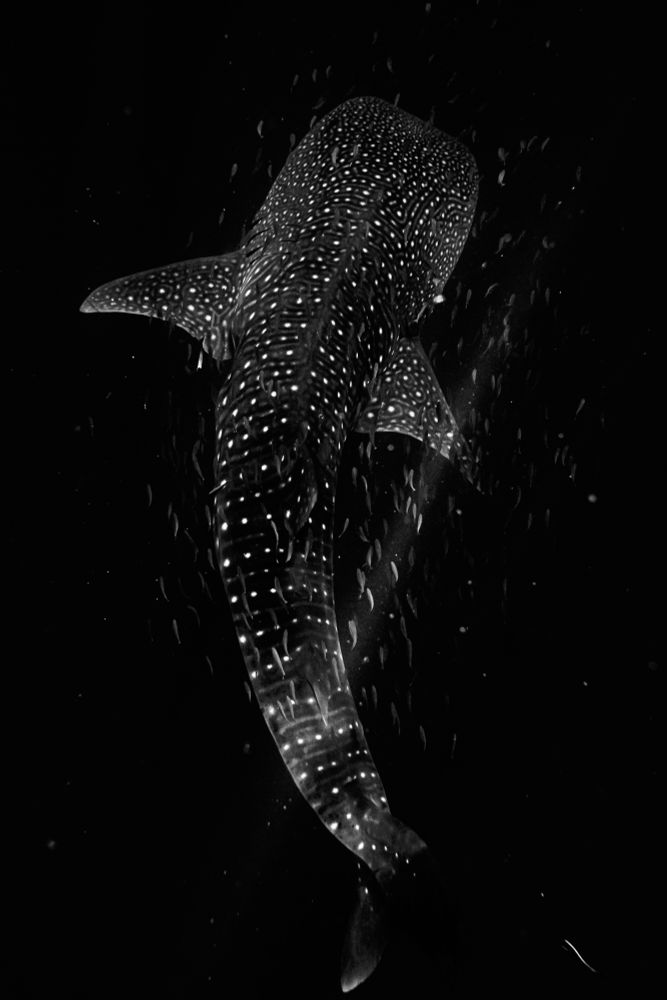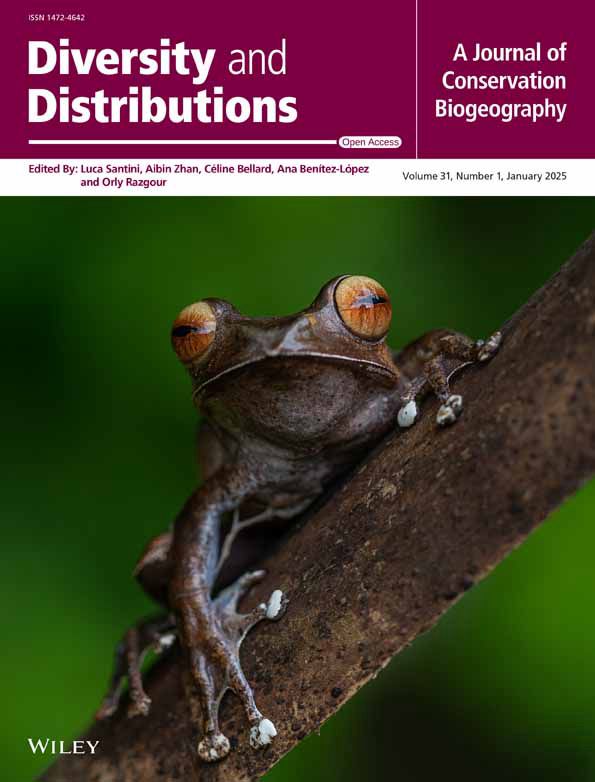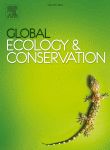
Marine predator movements create seascape connectivity in remote coral reef ecosystems - Movement Ecology
Background Movement of marine predators can connect different habitats and create links that are key for maintaining metapopulation dynamics, genetic diversity, energy flow and trophic links within and between systems. This key ecological process is known as ecological connectivity. Methods We used a combination of acoustic telemetry data, network analysis (graph theory), habitat modelling and machine learning methods to quantify movement patterns and habitat use of three coral reef predators (grey reef shark Carcharhinus amblyrhynchos, silvertip shark Carcharhinus albimarginatus and red bass Lutjanus bohar). We also assessed how movements and habitat preference influence connectivity in two remote reef systems (Rowley Shoals and Scott Reef) off Northwest Australia. Results Grey reef shark movements created more substantial connections within reef systems, greater than silvertip sharks and red bass, with occasional long-ranging movement linking distant atolls. Core use areas (nodes with high degree centrality) were represented by low complexity habitats in shallow areas near passages in the reef crest, but varied among species, time of the day and sex. Overall, female sharks had larger networks with greater movement extent than males indicating potential sex-specific patterns in movement and connectivity of sharks at both local (within an atoll) and regional (within reef system) spatial scales. Red bass movements resulted in local-scale connectivity between the lagoon and nearby forereef areas, whereas reef shark connectivity operated at broader scales with movement along the forereef creating stronger connections across distant areas within the reef systems. Conclusions The combination of animal tracking data, network analyses and machine learning allowed us to describe complex patterns of movement and habitat use within and between remote coral reef ecosystems and how they influence ecological connectivity over local and regional scales. Importantly, we suggest that the existing spatial protection across these remote coral reefs is effective in protecting the local-scale connectivity of mesopredators, yet broad-scale protection is required to effectively encompass the seascape connectivity of large predators which is crucial for the long-term health and stability of coral reef ecosystems.
Our new paper looking at movement and connectivity of predators in remote coral reefs using acoustic telemetry and network analysis link.springer.com/article/10.1... @robharcourt.bsky.social @imos-aus.bsky.social
13.10.2025 01:00 — 👍 6 🔁 1 💬 0 📌 0
Amazing, never seen such a specific calling! Sounds like a dream job!
19.07.2025 08:04 — 👍 2 🔁 1 💬 0 📌 0

New #Shark Pub available #OpenAccess in the journal Diversity and Distributions 📝
Here we show that both natural and artificial seafloor structures influence the movement and habitat connectivity of Whale Sharks across seascapes 🦈
🔗: tinyurl.com/ca9pzycv
🧵(1/4)
@uwaoceans.bsky.social
20.01.2025 00:33 — 👍 20 🔁 9 💬 1 📌 1
🚨🦈 New shark science! 🦈🚨 We observed a sexually mature male whale shark biting the caudal fin of a (likely juvenile) female whale shark. Biting is a pre-copulatory behaviour for many shark species, so this observation provides possible insights into the mating behaviours of this endangered species 🌊
03.01.2025 12:15 — 👍 33 🔁 7 💬 2 📌 0
Wetland/Marine Senior Research Ecologist for @BTObirds.bsky.social. He/him.
Seabirds | waterbirds | movement | animal behaviour | human-wildlife conflict | data science | birding. Views own.
movebank.org | Manage, share, protect, analyze, and archive animal movement data and bio-logging data | hosted by @mpi-animalbehav.bsky.social
Research ecologist, USFS Rocky Mountain Research Station | studying animal movement, human disturbance, and ecophysiology.
Professor 👩🏫 • sea turtle biologist 🐢 🛥️• marine scientist 🌊 • Director, UCF Marine Turtle Research Group • amateur silversmith ⚒️ • beachcomber 🦀 • crafter🧵🎨
Marine ecology • conservation • animal telemetry 🛰️ • marine management & policy • movement ecology
postdoc @UiTromso | arctic sustainability | marine ecology | animal movement | spatial ecology | biodiversity | foraging behaviour | she/her | 🏳️🌈
PhD Researcher @ExeterMarine, U of Exeter, Cornwall (UK).
Kittiwakes & Offshore Wind, animal movement data, ecological niche modelling, ocean and climate projection modelling, impact assessment analysis, and marine spatial planning!
Marine biologist and turtle tracker 🌊
Senior Marine Scientist at Dauphin Island Sea Lab
Marine ecology | Migratory genomics | Animal movement | Conservation
Pan-European initiative to integrate all aquatic animal tracking | we love telemetry, data & partnership | tracking & networking to improve aquatic life 🐟🐠🦈
Researcher in movement ecology, animal behaviour, biologging and mammals 🦫🐭🦦🐿️🐇🐀🐗🫎🐺🦌 (and 🦖🦉)
Marine biologist, university professor #ERCAdG researching #Shark movements, behaviour, conservation & climate change w/ biologging #GlobalSharkMovementProject - views my own
Marine Conservation Coordinator, Global Center for Species Survival @protectspecies.bsky.social, part of the amazing IUCN SSC network. @sscmarine.bsky.social🌎🌊🪸
President of Indiana Native Plant Society @innativeplants.bsky.social 🌱
She / her; views my own
Supporting, enhancing & mobilising expertise in marine species conservation for a better future.
[Reposts are not endorsements]
http://iucn-sscmarine.org
Summaries of all of the latest science on blue whales.
'Antarctic blue whale' rearranged is 'Let Branch wail at cue'.
Posts by Prof @TrevorABranch.bsky.social
Marine Scientist ~ Stingray Stalker ~ #TeamFish 🤙
Lead of the Northern Shark and Ray Research Group at Charles Darwin University
Conservation Biology, Spatial Ecology, Physiology & Marine Things 🏄♂️
Postdoc @MonashUni
Scientist @UpwellTurtles 🐢
Built @SharkMatesAus 🦈 @SeaTurtleTalks 🐢
PhD @MonashUni 🐊
https://linktr.ee/seanawilliamson
Shark and ray research & conservation at the Marine Megafauna Foundation. Ocean wildlife photographer (Sony NZ Digital Imaging Advocate).
Living in Kaikōura, New Zealand, working internationally.
Marine turtles, conservation & biology, Townsville, JCU, Australia
Research Associate at the University of Sydney studying fisheries and functions 🐠🐟
She/her
Cofounder 📊 bayesbaes.github.io
helenfyan.weebly.com
Movement ecologist 🦈
Ocean and outdoors enthusiast 🏕️🏄♀️
Research Scientist at Hopkins Marine Station, Stanford University




